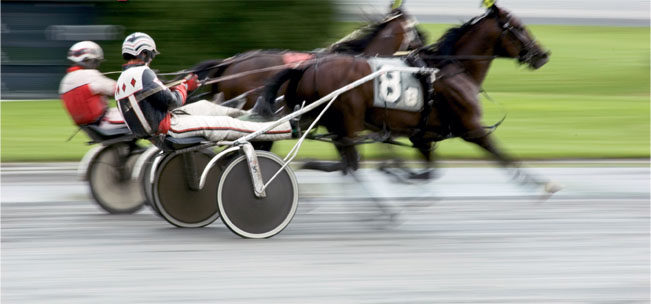American Farriers Journal
American Farriers Journal is the “hands-on” magazine for professional farriers, equine veterinarians and horse care product and service buyers.

CONCUSSIVE INJURIES. Harness racing horses may have weakened hoof walls due to the hard surfaces they frequently work on.
Normal vs. abnormal locomotion of the equine lower leg and foot is a complex and often confounding subject, according to equine veterinarian Olin Balch.
The member of the International Equine Veterinarians Hall Of Fame from Pullman, Wash., notes that one example of this is that even though performance problems in equine athletes are often attributed to hoof imbalance, hoof imbalance in and of itself, even in extreme cases, is rarely the sole cause.
“However, while there are any number of factors that contribute to hoof impact,” Balch says, “those that typically define a horse’s athletic performance are toe length, angle and mediolateral hoof balance and how these elements interact with one another.”
Toe length — described as the distance between the weight-bearing surface at the center of the toe to the proximal edge of the toe wall — is the most frequently adjusted part of the foot.
It is easily measured and modified, and according to Balch, should be related to body weight, although circumstances and exceptions to the rule exist. He cites gaited horses whose toe lengths are naturally and artificially extended beyond that of other light breeds, as well as show-ring draft horses that are also encouraged to have extraordinarily long hooves.
An excessively long toe, relative to body size and limb length, may cause the toe to dish out and — in acute cases — separate…